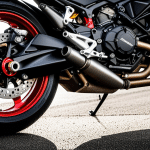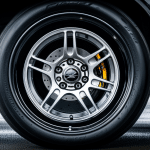Understanding Idle Speed in Carbureted Engines
Idle speed is a crucial factor in carbureted engine tuning and directly influences engine performance. At its core, idle speed refers to the engine’s revolutions per minute (RPM) when the throttle is fully closed, ensuring the vehicle remains stationary yet operational. It is essential for smooth idling, preventing stalls, and maintaining engine health.
Idle speed impacts overall engine performance; an engine idling too low may stall, compromising performance, while one idling too high can lead to increased wear and fuel consumption. Adjusting it correctly ensures balance, promoting efficiency and longevity. Common idle speeds typically range from 600 to 1,000 RPM, but this varies based on the engine type and vehicle model.
A découvrir également : Enhance Your Car’s Cooling System: Unlock Peak Performance Amidst the UK’s Weather Variability
For various carbureted engines, standard idle speed settings differ. For instance, small engines with four cylinders often idle around the 750 RPM mark, whereas larger V8s may require around 850 RPM. Understanding these variances is pivotal for correct tuning. Precise adjustments make significant improvements to engine stability and overall driving experience. By maintaining the correct settings, vehicle owners can expect smoother operations and enhanced performance. Proper carbureted engine tuning is key to achieving this balance, ensuring the engine runs effectively and efficiently.
Tools and Equipment for Tuning
For efficient carburetor adjustment, proper tools are indispensable. Tuning tools not only facilitate precise adjustments but also ensure you maintain optimal idle speed in your vehicle. When it comes to essential tools, the following are recommended:
Cela peut vous intéresser : Revamp Your UK Vehicle with Eye-Catching LED Interior Lighting: The Complete Retrofit Handbook
- Screwdrivers: A set with both flathead and Phillips is a must for opening and adjusting carburetor components.
- Tachometer: This tool is vital for measuring the revolutions per minute (RPM), helping to adjust the idle speed accurately.
- Vacuum gauges: These help in diagnosing vacuum leaks which can affect idle quality and overall engine function.
Several brands like Draper and Gunson are well-known in the UK automotive market for producing reliable tuning tools. Models specific to UK vehicles are readily available and are tailored to tackle the nuanced needs of regional vehicles.
The use of these tools simplifies the tuning process, ensuring you achieve precise adjustments while keeping in line with vehicle specifications. UK-specific automotive tools are designed to align with local vehicle models, making them a practical choice for tuning enthusiasts looking to enhance their carbureted engine performance.
Step-by-Step Guide to Adjust Idle Speed
Adjusting idle speed in a carbureted engine is an essential skill for any DIY enthusiast interested in maximizing engine performance. With the right approach, you can ensure your engine runs smoothly and efficiently.
Preparing for Adjustment
Before you adjust the idle speed, ensure your vehicle is on a stable surface and the engine is at operating temperature. Safety is paramount: use appropriate safety gear like gloves and goggles. Ensure the engine is off, and the ignition is in the off position. Remove the air cleaner for better access to the carburetor.
Adjusting the Idle Speed
Start the engine and use a tachometer to measure the current RPM. Locate the idle speed screw on the carburetor. Turn the screw clockwise to increase or counterclockwise to decrease the RPM. Adjust in small increments, checking the tachometer after each adjustment to avoid drastic changes. Aim for the idle speed recommended for your engine type.
Testing and Fine-Tuning
Once adjustments are made, test the engine’s response by gently revving the throttle. Check if the engine idles smoothly without stalling or surging. Fine-tune the adjustments as necessary, ensuring the engine performance aligns with expected standards. A stable idle speed enhances both efficiency and drivability.
Common Issues and Solutions
When it comes to carbureted engines, addressing idle speed problems is crucial for optimal performance. Common symptoms of incorrect idle speed include stalling, surging, and rough idling. These issues require timely troubleshooting to prevent further engine complications.
To identify the root cause of idle speed issues, start by checking for vacuum leaks. Leaks often lead to erratic performance and can be detected using a vacuum gauge. Another common issue is incorrect carburetor adjustments, which might necessitate fine-tuning the idle speed screw for better performance.
For addressing these problems, follow these troubleshooting tips:
- Inspect Vacuum Hoses: Ensure all hoses are connected properly and free of cracks or leaks.
- Check Air Filter: A clogged air filter can restrict airflow, affecting idle speed.
- Adjust the Mixture Screw: Fine-tune the fuel-air mixture for a smoother idle.
When solutions are implemented, you can improve engine response significantly. Adjustments will not only stabilise the idle but also enhance overall engine performance. Remember, regular maintenance and careful carburetor tuning are essential for preventing idle speed issues, ensuring longevity and efficiency in your carbureted engine.
Regional Considerations for UK Vehicles
When tuning UK carbureted vehicles, several regional considerations come into play. Understanding specific tuning practices for popular models is crucial, as these vehicles often require unique approaches. Consider the emissions standards set by the UK government, as they influence how tuning is conducted. Regulations here are stringent, so maintaining compliance while optimising performance is key.
Emissions standards can affect idle speed settings and even choice of carburetor adjustments. Tuning must adhere to prescribed air-to-fuel ratios, ensuring emissions remain within legal limits. Failure to comply can result in penalties or vehicle malfunction, making it essential to consult with professionals familiar with local regulations.
Idle speed settings often vary based on regional practices. UK tuning may involve idle speeds slightly different from global norms to meet both performance and compliance goals. Understanding these variations allows for effective tuning that enhances engine performance while respecting the unique requirements of UK vehicles.
Overall, recognising and adapting to these regional factors ensures that your carbureted vehicle performs optimally and adheres to local emissions regulations. Engaging with local tuning experts and enthusiasts can provide valuable insights into achieving the best results for your vehicle.
Performance Impacts of Proper Idle Speed Adjustment
Adjusting idle speed properly can significantly influence your engine’s performance benefits. By maintaining the optimal idle speed, engines enhance their overall efficiency, leading to improved fuel economy and reduced emissions. Correct settings decrease unnecessary strain, thus prolonging engine longevity.
Precision in adjustment boosts throttle response, making the driving experience smoother and more responsive. Adjustments ensure that the engine runs at the ideal RPM, benefiting daily commuting and spirited driving alike.
After fine-tuning, notice performance improvements such as reduced engine noise and vibrations, contributing to a comfortable driving experience. Properly calibrated engines also minimize wear, extending the engine’s operational lifespan. It’s clear that well-maintained idle speed does more than just keep the engine running at rest—it actively enhances the vehicle’s overall performance capabilities.
In conclusion, ensuring your engine efficiency through correct idle speed settings not only optimises performance but is also a commitment to longer vehicle life. Always consider these aspects when engaging in carburetor adjustments, striving for the ideal balance between performance and sustainability.
Safety Tips and Best Practices
Safe tuning practices are crucial when working with carbureted engines to protect both the user and the engine. To ensure a secure environment, equip yourself with essential safety gear like gloves and goggles during the tuning process. This gear protects against any unexpected spills or debris.
Before embarking on carburetor adjustments, place your vehicle on a flat, stable surface, ensuring the engine is completely off with the ignition in the off position. This precaution minimises the risk of accidental movement, providing a safer workspace for engine safety.
Adhering to tuning guidelines involves more than just technical skill. It requires ongoing attention to safety, particularly when testing adjustments on the road. Ensure that all engine covers are secure, and regularly inspect tools and equipment for any wear or damage.
For safe, effective tuning, keep a fire extinguisher nearby and be mindful of flammable fumes. Always prioritise safety, particularly when dealing with fuel systems, to maintain vehicle safety and ensure longevity and engine efficiency. Conclusively, a blend of technical proficiency and rigorous safety measures fosters a safer, more efficient tuning environment, preventing accidents and promoting optimal engine performance.
Additional Resources and Community Support
Engaging with automotive resources and connecting with fellow enthusiasts through tuning forums can greatly enhance your understanding and skills in carbureted engine tuning. These platforms offer a wealth of knowledge from seasoned experts and hobbyists alike, providing insights into engine performance optimization.
Online communities such as UK-based car enthusiast groups are invaluable for sharing experiences, troubleshooting tips, and best practices related to idle speed adjustments. Websites like PistonHeads and UK Hot Rod are noted for their active forums, where you can discuss regional-specific tuning challenges. These interactions often lead to new perspectives and innovative solutions.
In addition to forums, accessing automotive resources like publications and guides can deepen your technical knowledge, offering in-depth analysis on engine tuning intricacies. Publications such as “Practical Performance Car” provide articles tailored to UK vehicle regulations, which can be particularly helpful in navigating the complex landscape of emissions standards.
Networking with enthusiasts and industry professionals not only fosters a sense of community but also presents opportunities to learn through hands-on experiences and shared projects. This collaboration can prove vital in refining your skills and achieving excellence in carbureted engine tuning.






